Rob Bignell's Blog, page 357
October 7, 2013
Write a great narrative hook for your story
One sign 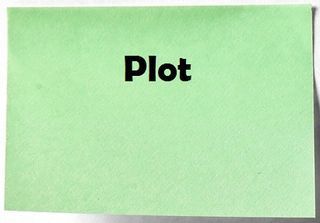 of a good opener is that it makes the reader want to continue with the story. Using a fishing metaphor, a good opener “hooks” the reader.
of a good opener is that it makes the reader want to continue with the story. Using a fishing metaphor, a good opener “hooks” the reader.
Writers who catch the reader have employed a successful narrative hook. A narrative hook involves dangling elements of the story before the reader so he can’t help but bite. This is done by making the reader want to know more - the who, what, where, when, how and why of the story.
Consider this story opener:
Jord ducked around the corner, pressed himself hard against the damp wall, wishing he could fade into it. His eyes darted toward the wall’s edge, hoping to catch the shift of a shadow, a movement of brush, any sign at all that they were close.
Notice how it dangles elements of the story. The reader wants to know why Jord is running and who is chasing him. The reader wants to know if Jord will get caught.
Successful narrative hooks usually begin the story in the middle of the action. Conflict already is underway. Beginning a story this way immediately creates dramatic tension, which for most readers is the delight of the narrative.
Need an editor? Having your book, business document or academic paper proofread or edited before submitting it can prove invaluable. In an economic climate where you face heavy competition, your writing needs a second eye to give you the edge. I can provide that second eye.
Related articles
 How to form your story's basic structure
How to form your story's basic structure Avoid exposition (Show, don't tell!)
Avoid exposition (Show, don't tell!) Avoid giving readers a big info dump
Avoid giving readers a big info dump Draw readers into story with great opening lines
Draw readers into story with great opening lines When exposition is necessary in a story
When exposition is necessary in a story
October 6, 2013
Deliver an eyeball kick for effective writing
One  of the best ways to keep readers engaged in a story is to give them an eyeball kick. A term coined by science fiction writer Rudy Rucker, an eyeball kick is “a perfect, telling detail that creates an instant and powerful visual image,” according to the Science Fiction Writers of America.
of the best ways to keep readers engaged in a story is to give them an eyeball kick. A term coined by science fiction writer Rudy Rucker, an eyeball kick is “a perfect, telling detail that creates an instant and powerful visual image,” according to the Science Fiction Writers of America.
Consider this example an of eyeball kick (I've intentionally boldfaced it.) from the novel “Quantum: Event Horizon” by Zac McNabb, in which the foster parent Ron speaks of his two children:
“It’s alright. The Lord has blessed her with good judgment. I believe the Lord has blessed Samuel with the wisdom needed to keep family secrets. Luke 8:10 says ‘The knowledge of the secrets of the kingdom of God has been given to you. But to others I speak in parables, so that, though seeing, they may not see; Though hearing, they may not understand.’” Ron picks the raw meat out of his teeth. “That means God wants you to honor your families, and it’s ok keep secrets, because others may not understand.”
What makes an instant and powerful image? First, it must be evocative, meaning it brings out strong emotions or feelings in readers. Ron picks the raw meat out of his teeth accomplishes this by rousing a sense of revulsion in the reader. In addition, the image adds to the story’s meaning by providing a new layer of understanding or an insight into it. The reader suddenly knows that Ron is a child abuser of some sort. In this way, the image creates instant understanding.
Be careful of overdoing it, though. An image that tries too hard to be evocative can misfire, undercutting the story. Delivering an eyeball kick requires a precise aim.
Need an editor? Having your book, business document or academic paper proofread or edited before submitting it can prove invaluable. In an economic climate where you face heavy competition, your writing needs a second eye to give you the edge. I can provide that second eye.
Related articles
 Place Easter egg to reward careful readers
Place Easter egg to reward careful readers Delete bookisms in your story's dialogue
Delete bookisms in your story's dialogue Maintain 'fictional dream' when penning novel
Maintain 'fictional dream' when penning novel Novelists must create 'fictional dream'
Novelists must create 'fictional dream' Avoid card tricks in the dark when writing
Avoid card tricks in the dark when writing
Outline your scene when stuck on what to write
When stuck
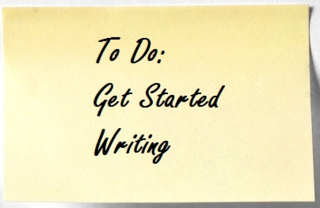 writing your story, you may want to borrow a technique from screenwriting by making a scene outline. This is a blow-by-blow description of the story’s events.
writing your story, you may want to borrow a technique from screenwriting by making a scene outline. This is a blow-by-blow description of the story’s events.
An excerpt from a scene outline you might write for a story would be:
-Perdita, wearing separates and Mary Jane flats, approaches the elementary school diamond where children are playing kickball
-She stands at the diamond’s periphery, afraid the children won’t accept her
-Slowly the other children begin to point at her and whisper to one another to look at her
-The teacher, with a kind look on her face, waves Perdita over
-Perdita is hesitant
-Teacher waves again for her to come over, tells her it will be all right
-Perdita comes over, feels self-conscious as all of the children stare silently at her
-Perdita reaches the home plate area
-The teacher asks her if she’d like a turn at bat
-Perdita nods
-The teacher gestures for her to stand at home plate
-Perdita does, gazes out at the children in the green field
-The boy at the pitcher’s mound eyes her, swings back the arm holding the red rubber ball then brings it forward
-The ball rolls toward home plate
-Perdita eyes the ball, and when it comes within a couple of feet of home plate, she takes two dainty steps forward and kicks it
-Ball goes sailing past second base, children scramble for it
-Perdita jumps up with glee, when the children waiting at the dugout shout, “Run! Go! Run!”
-Perdita races to first base
-As she’s within three steps of first base, an outfielder throws the ball to the baseman
-Perdita slides into first base and is safe to the cheers of the children at the dugout
-Perdita smiles broadly
Typically the following elements go into a scene outline:
g Identifies point of view character – This establishes from whose perspective the scene will be told from. In the above example, the main character whose view we focus on is Perdita.
g Lists the story’s action – This is a beat-by-beat account of what occurs in the scene and probably will be the bulk of your outline. Three consecutive beats in the above example are: The teacher with a kind look on her face, waves Perdita over; Perdita is hesitant; Teacher waves her to come over again, tell her it will be all right. A full scene outline would show where chapters begin and end.
g Provides background information – This information may not be part of the narrative flow but is necessary to understanding the character or the setting; it’s like exposition. For example, this outline makes a point of showing that Perdita is wearing separates and Mary Jane flats and that she is at the elementary school diamond where children are playing kickball.
g Expresses story’s theme – In a screenplay, this gives the cast and film crew direction about how to approach the scene; in your case, it helps you as the writer know how to approach it. The phrase afraid the children won’t accept her shows that the scene is about an elderly woman gaining the respect of children.
A scene outline can help kick start your creativity because it forces you to imagine the story and gives you focus as doing so. You’re not worried about writing complete sentences that are grammatically correct and lush with description and imagery. Once you have an outline, then you can string your points together into complete sentences and concentrate on syntax.
A final note: Screenwriters typically write their scene outline in present tense, but as a short story writer or novelist, you certainly can modify it to be in past tense since that’s probably how you’ll write the piece, and switching verb tenses would just be messy.
Need an editor? Having your book, business document or academic paper proofread or edited before submitting it can prove invaluable. In an economic climate where you face heavy competition, your writing needs a second eye to give you the edge. I can provide that second eye.
Related articles
 How to finally finish your languishing novel
How to finally finish your languishing novel Writers can blog about variety of topics
Writers can blog about variety of topics Make final words of your story count
Make final words of your story count
October 5, 2013
Basic steps to follow in mainstream publishing
If going 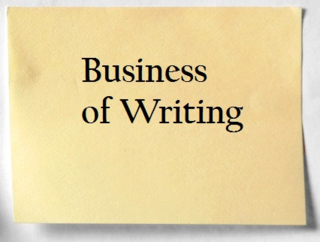 the mainstream publishing route, there are some very general steps that most writers traditionally follow.
the mainstream publishing route, there are some very general steps that most writers traditionally follow.
First, make sure your novel is in manuscript form. Each place you submit your novel has slightly different rules, so you’ll want to become familiar with the general guidelines and then learn specific expectations that various editors/lit agents/publishers have. As a side note, make sure your manuscript is as clean of spelling, punctuation, capitalization and grammar errors as possible, meaning you’ll need to have some people read it over.
Next, you’ll need to write a query letter and a synopsis of the first novel. These items introduce you and your work to the person you’re submitting materials to. Again, there are some basic industry guidelines for how these should be written, and each needs to be tailored to who you’re sending the letter and synopsis to.
From there, you’ll want to move on to finding a literary agent. There are several reputable guidebooks for sale at bookstores or available free online that list literary agents, whether or not they’re accepting submissions, the type of writing they handle, their unique submission requirements, and contact information. You’ll need to spend some time perusing the guidebook to create your own list of the literary agents that would be most interested in your work. Make sure the guides you use are no more than a year old.
With novels, don’t limit yourself to literary agents, however. Also submit your work to publishing houses. A few accept unsolicited submissions. Lists of those companies also appear online and in published guides (located on the same library or bookstore shelves where you’ll find the literary agents guides). Should a publishing house show interest in your work, immediately reach out to a literary agent to represent you; you’ll find that at least a couple will be interested.
None of this is inexpensive, by the way. While many literary agents and publishers accept email submissions, many still want to see your query letter, synopsis and manuscript on paper. So you’ve got the expense of paper, envelopes, printer cartridges and stamps. Given the low rate of mainstream publisher’s acceptance of new authors, this makes self-publishing a very viable option. You literally can self-publish your book for free, and all of the skills you need to know to accomplish this are easily mastered if you’re willing to put in the time.
Need an editor? Having your book, business document or academic paper proofread or edited before submitting it can prove invaluable. In an economic climate where you face heavy competition, your writing needs a second eye to give you the edge. I can provide that second eye.
Related articles
 Why writers must learn to handle rejection
Why writers must learn to handle rejection How to find lit agents, publishers for your writing
How to find lit agents, publishers for your writing Follow Heinlein's Rules to land big book deal
Follow Heinlein's Rules to land big book deal
October 4, 2013
Sell products related to your book
If you have 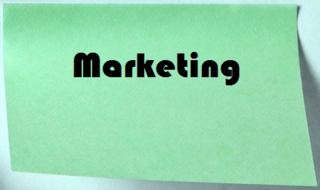 a popular book or have developed a series of books, you may want to expand your revenue opportunities by offering merchandise centered on it. There’s really no limit to what you can merchandise, though coffee mugs, T-shirts and tote bags probably will prove to be the most popular sale items.
a popular book or have developed a series of books, you may want to expand your revenue opportunities by offering merchandise centered on it. There’s really no limit to what you can merchandise, though coffee mugs, T-shirts and tote bags probably will prove to be the most popular sale items.
You can build such a page using your website host’s template – it’s as simple as posting thumbnails and product descriptions with prices. But this then requires you to go out and order all of these book-related items, to warehouse them, and then to set up some pay system. And you didn’t become a writer to become a retailer.
A much easier route is to create an online store at a provider like CafePress or Zazzle. They’ll provide products that you simply slap your book logo onto, offer a website page for you to display these items in catalog form, give customers a way to pay with their credit cards, and they’ll handle all of the orders. These online store providers then send you a cut or royalty for sales made.
Setting up such a storefront will take some time. I probably spent an entire afternoon and the better part of an evening creating the online store for my “Hikes with Tykes” series. If you’ve got a teenager or college-aged kids, you may want to talk them into building the storefront for you. It’s actually lots of fun to do – but it’s also a distraction from your writing.
The other downside to these storefronts is that getting them to look like your website is nearly impossible. That’s probably not such a big deal, though, so long as you give your storefront the same name as your website and try to use a similar color scheme.
A link to your online store should appear on your website. It can simply be called “Online store” or “(book series name) Merchandise.”
To set up a storefront, first decide who will be your online store host. Reviews of CafePress, Zazzle, and other providers appear online and are well worth reading before jumping in.
Once you decide who will host your online store, you’ll have to create an account with that company, provide information about where your royalty can be deposited, and set up the storefront template. All of this can be done online.
The last general step is to decide what merchandise you’ll sell. Among the items you might consider are: aprons, bed sheets, clothing (especially T-shirts and hats), coffee mugs, iPod cases, journals, Which social media is best to promote your book?
October 3, 2013
How to construct an index for a nonfiction book
Sometimes after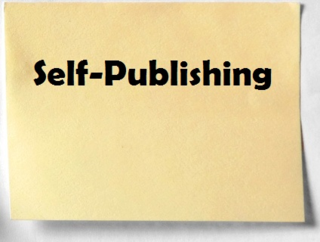 finishing a nonfiction book, readers want to review a specific concept or idea that appears on only a few pages of the volume. The table of contents probably is too general to give them the exact page numbers that they want to read. Instead, they turn to the index.
finishing a nonfiction book, readers want to review a specific concept or idea that appears on only a few pages of the volume. The table of contents probably is too general to give them the exact page numbers that they want to read. Instead, they turn to the index.
Indexes offer alphabetized listings of key concepts discussed in the book, telling what pages they appear on. The index typically comes at the end of the book following the appendices.
What should be indexed? As proofreading your book, look for key words in the text, particularly those that paragraphs are about. Begin writing those words on a separate word processing file, including the page numbers that they appear on.
In addition, you’ll want to keep track of related concepts. For example, in my book “Hikes with Tykes: A Practical Guide to Day Hiking with Kids,” one of the key concepts discussed is “Crossing terrain,” so that word receives an entry. Since there are different types of terrain one could cross, related concepts that appear under “Crossing terrain” include “rock hopping,” “scree,” “slopes” and “waterways.” These related concepts typically are indented to show that they fall under the main concept’s heading.
Further, sometimes there are synonyms for keywords. Rather than list the pages twice under two different words meaning the same thing, you might send a reader to the other concept. For example, my hiking book refers to “cougars” as “mountain lions,” so the index entry for “cougars” says “see mountain lions.”
Page numbers often are shortened to help keep the index from looking too cluttered. If text about “rock hopping” appears on both page 122 and 123, the page numbers in the index may simply be abbreviated to 122-3.
A set of index entries following the above rules would look like this:
Cougars, see mountain lions
Crossing terrain, 121-3
Rock hopping, 121
Scree, 121-2
Slopes, 122
Waterways, 122-3
When formatting the index, have it take up two columns per page in books that aren’t any wider or taller than an 8.5 x 11 sheet of paper. Most authors also opt to have the index printed in a smaller point size than the main body of text to ensure that more keywords can get on the page and to distinguish it from the rest of the text.
Given that you need to include page numbers, writing of the index needs to occur near the end of the writing process. Don’t place any page numbers in the index until you’re down to your last proofreading, in which the only changes you’ll make is correcting a rare typo, or you’ll soon find your page numbers are wrong.
The challenge then is to set aside just the right amount of space for the index. In a self-published 220-page book, four pages probably are enough.
Finally, the index takes page numbers, continuing with the Arabic numerals that began back with the index.
Need an editor? Having your book, business document or academic paper proofread or edited before submitting it can prove invaluable. In an economic climate where you face heavy competition, your writing needs a second eye to give you the edge. I can provide that second eye.
Related articles
 Forewords, prefaces and introductions
Forewords, prefaces and introductions How to construct your website's home page
How to construct your website's home page How to write an author's bio
How to write an author's bio Offer readers a sample chapter page on website
Offer readers a sample chapter page on website Get it right, all right vs. alright
Get it right, all right vs. alright
October 2, 2013
Breaking the barrier: Hurdle vs. hurtle
Hurdle vs. hurtle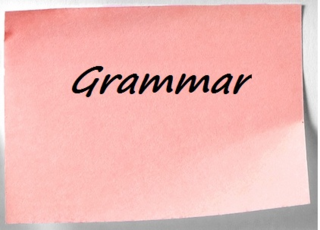 are two similar sounding words that often get confused.
are two similar sounding words that often get confused.
“Hurdle” can have a couple of meanings. As a verb, it means to “leap” or “overcome.” So, “Liam hurdled over the mud puddle as he ran down the road.” As a noun, it means an “obstacle” or “barrier.” To wit, “Liam found the mud puddles were no great hurdles to his getaway.”
“Hurtle” means to “throw with great force” or “move with great speed.” For example, “Emily hurtled a rock at the approaching bear” and “Emily hurtled through the woods as the bear chased her.”
Need an editor? Having your book, business document or academic paper proofread or edited before submitting it can prove invaluable. In an economic climate where you face heavy competition, your writing needs a second eye to give you the edge. I can provide that second eye.
Related articles
 Constructive tip: Build up vs. build-up vs. buildup
Constructive tip: Build up vs. build-up vs. buildup Two l's or not two l's: Canceled vs. cancelled
Two l's or not two l's: Canceled vs. cancelled Tighten writing by cutting begin fallacy
Tighten writing by cutting begin fallacy
October 1, 2013
Avoid handwaving to cover a story flaw
Sometimes when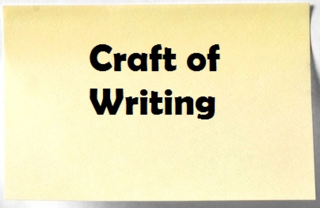 a car salesman has a shoddy vehicle to sell, he tries to distract you from the flaw by pointing out something that’s good – like turning up the radio and raving about the great sound system so you don’t hear the engine knock.
a car salesman has a shoddy vehicle to sell, he tries to distract you from the flaw by pointing out something that’s good – like turning up the radio and raving about the great sound system so you don’t hear the engine knock.
Sometimes writers do exactly the same thing. When this occurs, they’re guilt of handwaving.
A term coined by Stewart Brand, handwaving is “distracting the reader with verbal fireworks to keep him from noticing a severe logic flaw.” For example, a “Star Trek: The Original Series” episode “Miri” has our intrepid explorers discover an exact duplicate several hundred light years from this region of the galaxy. The device of a duplicate Earth allows a landing party to encounter a world on which only children live, as a life longevity project from 300 years before has gone bad, ensuring that once youth enter puberty they contract a fatal disease.
Unfortunately, exactly why there is a duplicate Earth several hundred light years from here is never addressed in the episode. It’s an interesting concept but highly improbable. It piques viewers’ interest – much in the same way that one waves their arms – and covers the issue of exactly why our crew would come across planet with humans on it. Once thought about, the unexplained flaws of a duplicate Earth to allow us to have a planet of humans to interact with merely undermines the episode’s credibility.
To fix handwaving, you’ll need to dump the plot device and instead address the logical flaw. That may require some major rethinking of the plot or character and possibly even a significant rewrite of sections of the story. In “Miri,” that would mean not visiting a duplicate Earth. Instead, the humans on the planet might be descendants of a colonial expedition sent out three centuries before from Earth.
Such rewriting may take a lot of work but the effort is worth it. After all, any reader eventually will hear that knocking engine in your story…
Need an editor? Having your book, business document or academic paper proofread or edited before submitting it can prove invaluable. In an economic climate where you face heavy competition, your writing needs a second eye to give you the edge. I can provide that second eye.
Related articles
 Five style issues to watch for in your story
Five style issues to watch for in your story Getting focused on close up vs. close-up
Getting focused on close up vs. close-up Tighten writing by cutting begin fallacy
Tighten writing by cutting begin fallacy
September 30, 2013
Editor wraps up summer book reading tour
Thanks to Redbery Books for hosting Meet the Author on Sunday in Cable, Wis. During the event – which featured 10 Northwoods authors – I read from my forthcoming book of hiking essays, “Trails and Trials: Journeys of a Father and Son.” The event wraps up my summer book promotional tour for Headin’ to the Cabin: Day Hiking Trails of Northwest Wisconsin. Here are photos from the event.
for hosting Meet the Author on Sunday in Cable, Wis. During the event – which featured 10 Northwoods authors – I read from my forthcoming book of hiking essays, “Trails and Trials: Journeys of a Father and Son.” The event wraps up my summer book promotional tour for Headin’ to the Cabin: Day Hiking Trails of Northwest Wisconsin. Here are photos from the event.
Need an editor? Having your book, business document or academic paper proofread or edited before submitting it can prove invaluable. In an economic climate where you face heavy competition, your writing needs a second eye to give you the edge. I can provide that second eye.
Related articles
 Editor releases fifth 'Hittin' the Trail' book
Editor releases fifth 'Hittin' the Trail' book Editor's sixth 'Hittin' the Trail' book released
Editor's sixth 'Hittin' the Trail' book released How to arrange a public book reading/signing
How to arrange a public book reading/signing
Write your story’s penultimate scene
In every 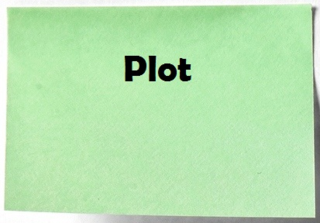 story, there comes a turning point or an ultimate moment in which the situation has become so intolerable that the main character must take a decisive step and emerge victorious. This scene is known as the climax.
story, there comes a turning point or an ultimate moment in which the situation has become so intolerable that the main character must take a decisive step and emerge victorious. This scene is known as the climax.
Also called a “final obstacle,” the climax comes at the end of the story’s rising action. The main character metaphorically has reached the mountain top and either must push off the antagonist or be pushed off. Because of this, the climax is a scene of escalated action. It is that part of the story when the main character resolves the story’s central problem.
An excellent example of a climatic scene is the rebel’s attack on the Death Star in “Star Wars IV: A New Hope.” As the scene begins, the tension has built to the point where if the rebels do not destroy the Death Star, they are doomed. Faster and more dramatic than any other scene in the movie, the assault on the Death Star even appears as if it will fail. Using the lessons learned through the story about the Force, however, Luke Skywalker succeeds in a climatic moment by firing the one in a million shot that destroys the Empire’s weapon of ultimate destruction. In doing so, the threat of the Death Star disappears, and the rebellion is saved.
Sometimes for dramatic effect, writers employ a “false ending.” In this technique, after readers think the climax has been reached, the villain comes back one last time for a confrontation. An example is the first “Terminator” movie in which Sarah O’Connor apparently has destroyed the robot from the future in a steel factory. The Terminator’s metal skeleton rises from the flames, however, to pursue Sarah. The false ending actually is the last scene of the rising action.
When writing a climatic scene, writers should follow a couple of simple guidelines:
g The climax must be the largest obstacle facing the main character and test him in the most significant ways - In the climax of “Star Wars IV: A New Hope”, not only Luke Skywalker’s piloting skills but also his faith in the Force are tested. Without the mastering of both, he cannot destroy the Death Star.
g The outcome heading into the climax should be uncertain - Often the antagonist holds the upper hand as the rising action ends. In “Star Wars IV:A New Hope”, an operational Death Star is bearing down on the rebel base, and the rebellion appears to be outgunned and outmatched. However, the reader’s understanding of Western storytelling techniques tells him that the main character should emerge victorious. This balance creates dramatic tension as the reader wonders how the rebels might overcome the Death Star when the odds are against them.
Need an editor? Having your book, business document or academic paper proofread or edited before submitting it can prove invaluable. In an economic climate where you face heavy competition, your writing needs a second eye to give you the edge. I can provide that second eye.
Related articles
 Create a riveting opener for your story
Create a riveting opener for your story Unfold action to develop a stronger story
Unfold action to develop a stronger story Pit story's hero against society to create conflict
Pit story's hero against society to create conflict Your story: Thrusts and counterthrusts
Your story: Thrusts and counterthrusts Base story on overcoming emotional disturbance
Base story on overcoming emotional disturbance



